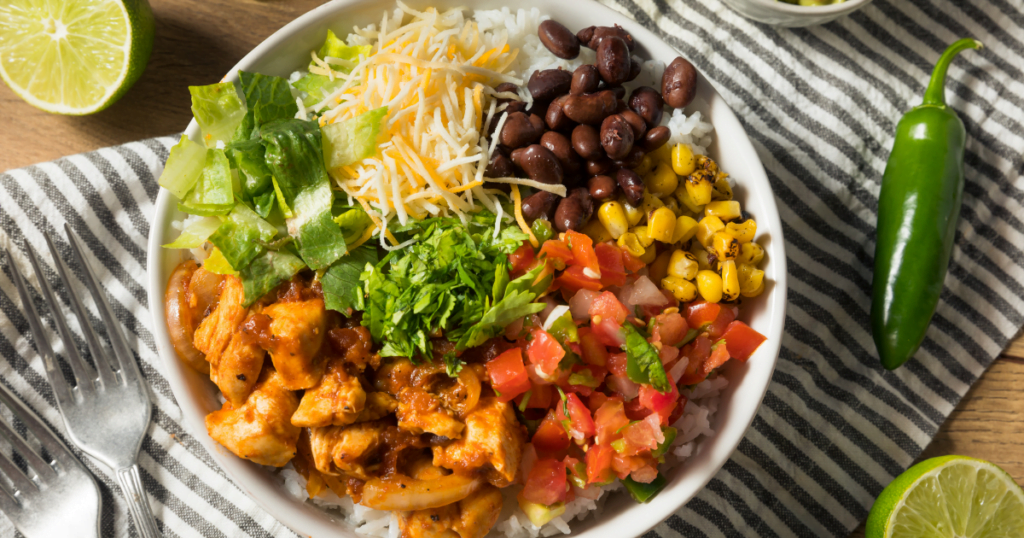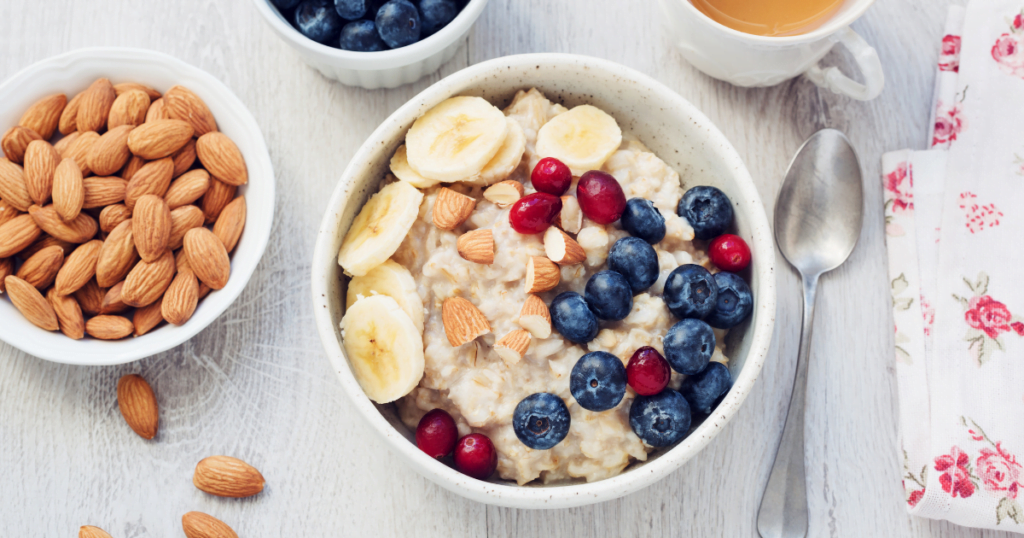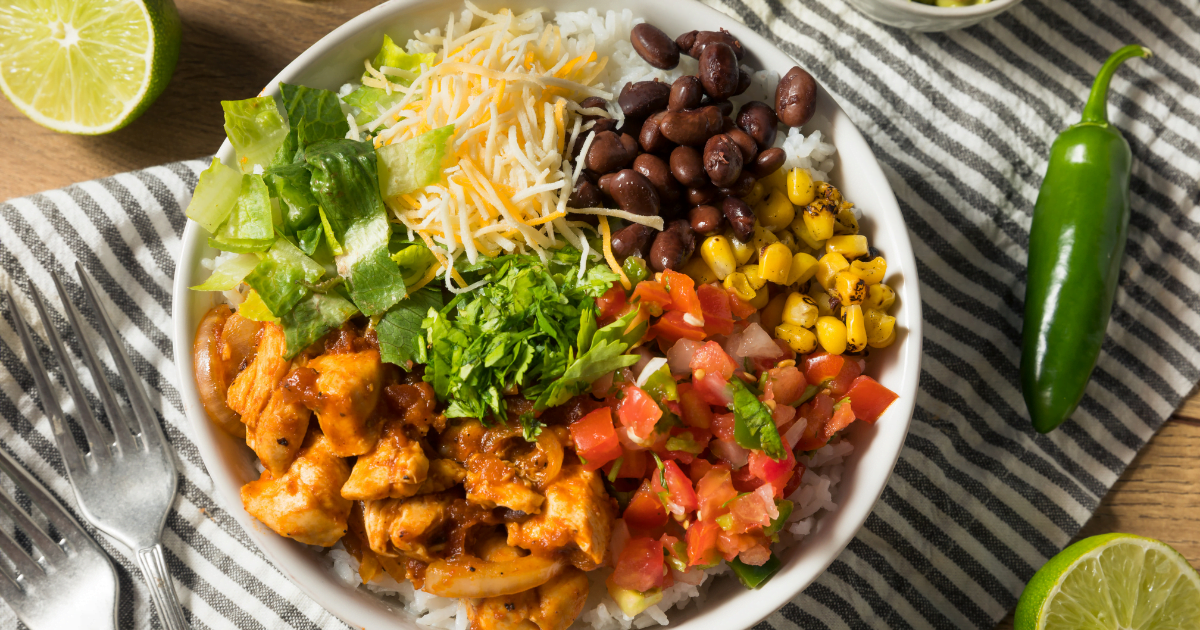
Does it sometimes feel hard to figure out what constitutes a “healthy” food these days? It’s not just you; this feels confusing for everyone! It is one of the most common questions I hear when working with clients.
With social media and diet advice just about everywhere we look, you might feel bombarded with conflicting information. Should you be eating mostly plants? Mostly meat? Avoiding everything processed? All organic? It’s enough to make your head spin.
P.S. It’s none of those answers, btw…
I’m Angie, Registered Dietitian and sports nutrition expert. Because I’ve been a dietitian for a long time, I’ve seen what qualifies as “healthy” do a complete 180 in my time in the field. When I was training to become a dietitian back in the 90s, healthy often meant low-fat or low-calorie, possibly quite tasteless, or maybe just a very small portion of something. This is very different from what healthy means to me as a Certified Intuitive Eating dietitian in 2024, who works with clients on things like honoring gentle nutrition, enjoying food, and listening to their bodies.
In this blog post, I’ll walk you through:
- A checklist of things to think about when deciding what feels healthy for you as an athlete
- Some amazing, quick, and easy meals from nutrition professionals that make preparing healthy athlete meals a snap
- Considerations for how your needs as an athlete may be different from family or friends who are not athletes
- Some tips on cooking and enjoying your healthy meals without spending hours and hours prepping and chef-ing
Let’s jump in with your checklist of what your meals might look like to be nourishing, satisfying, and delicious.
What are the components of healthy foods for an athlete?
When thinking about healthy foods for an athlete, it might be helpful to refer to a checklist. As a dietitian, these are my top considerations for you to be able to find the best, most personalized meals for you.
Ask yourself:
Does the food contain all three macronutrients: carbohydrates, protein, and fat?
Do you enjoy eating this food?
Does preparing it fit into your schedule as a time-crunched athlete?
Does it fit into your food budget?
Is the food easily digested or does it “sit well” in your stomach?
Will it provide enough energy for you to perform well during practice or a competition?
Will it provide enough carbohydrates and protein to help you recover if including it after a tough session?
FYI, I have a blog post that is entirely focused on nourishing meals to eat after a tough workout. Click here to check it out.
12 Quick and Healthy Meals for Time-Crunched Athletes from Nutrition Pros!

And here we are: my top ideas for meals that are balanced, satisfying, easy to digest, and tasty!
Breakfast
Obviously great for the first meal of the day, but busy athletes can enjoy breakfast foods for lunch and dinner, too. Check out these two quick and delish ideas, one using an Instant Pot and one requiring a simple spin in the microwave.
Instant Pot Spinach Tomato Egg Bites by Priscilla Askew, Nutrition and Dietetic Technician (NDTR) and owner at Askew Nutrition & Fitness
Priscilla pairs these with fruit; make sure to add your favorite carbohydrate side!
Quick High Protein Vegan Oatmeal by Blair Persyn, MS, RDN, LDN, CNSC owner of Bites With Blair
If you need something even quicker, pop 2 Kodiak Power Waffles in the toaster and top with nut butter and fruit. Easy to make into a sandwich for on-the-go, if needed.
Bowls
Who doesn’t love a convenient bowl of comfort that uses bagged salad, quick microwaved grains, and shaved beef for a healthy athlete meal in under 30 minutes?
These Asian Beef Bowls, by Sarah Pflugradt, MS, RDN, CSCS author and owner of Sarah Pflugradt Nutrition are a nourishing, balanced complete meal in a bowl.
Or check out these 3 easy ideas to create your own bowl, that’s a favorite staple of an Ironman World Championship Qualifier!
CYO Grain Bowl, by McKenna Welshans RD, CSSD owner of Nourished Well LLC
No time to cook your own bowl? Try Trader Joe’s Chicken Burrito Bowl for a quick, warming bowl filled with nourishing brown rice, quinoa, black beans, corn, and chicken.
Soup
Wonderful for colder weather, but soup is a fantastic way to get several days’ worth of meals no matter what the temperature is outside.
Easy Spicy Lentil Chili Instant Pot Recipe by Melissa Altman-Traub, MS, RDN
Crockpot Chicken Tortilla Soup by Angie Ashe MS, RD, CSSD owner of Eleat Sports Nutrition
If you are worried these soup recipes make too big of a batch for you, consider investing in some Souper Cubes to cook once and freeze for future meals.
Need soup in a pinch? If you don’t have your own soup frozen, try Amy’s Organic Lentil Soup for a tasty pantry staple. Pair with a sandwich or wrap for a complete athlete meal.
Skillets
Time-crunched athletes don’t have time to be doing dishes all night, either! Check out these delish skillets that only require one pan.
Easy Ground Turkey and Black Bean Taco Skillet by Christina Iaboni Healthy Living
Mexican Carmelized Rice and Veggie Skillet by Jackie Newgent, RDN, CDN, plant-forward chef, nutritionist, and author of The Plant-Based Diabetes Cookbook
Vegan Sweet Potato Kale Hash by Sarah Schlicter, RD owner of Bucket List Tummy
Pasta
Pasta meals are a carbohydrate-rich staple, perfect for meeting the nutritional needs of busy athletes. Here are a few quick, delicious favorites from sports dietitians.
Freezer Friendly Lasagna Roll Ups by Stevie Lyn, MS, RD, CSSD owner of Stevie Lyn Nutrition
High Protein Pesto Pasta, by Kelly Jones, MS, RD, CSSD owner of Kelly Jones Nutrition
These two pasta meals are fairly quick and freezer-friendly on their own, but if you need something a little faster, try a refrigerated pasta like Trader Joe’s Cacio e Pepe Ravioli with your favorite sauce and a veggie side.
Seafood
Some athletes are intimidated by fish, but it is such a great way to get a delicious high-protein meal on the table quickly. The flavors in these two dishes are sure to win you over!
Instant Pot Coconut Crusted Alaskan Pollock, by Sarah Schlicter, RD owner of Bucket List Tummy
Ginger Tahini Oven Baked Salmon and Vegetables, by Sara Haas, RDN, LDN for Eating Well
Costco has a few frozen fish options that are great if you don’t have time for one of the above amazing recipes. Check out Everything Seasoning Breaded Cod or Miso Glazed Cod; pair it with rice and a quick vegetable for a complete athlete meal.
What makes healthy athlete food different from “regular” healthy food?
The truth is, there is actually quite a bit of overlap of what foods I’d recommend for an athlete and for “regular” people in general. However, there are a few specific things that athletes will want to pay attention to, which I’ll explain here.
Nutrient density.
Healthy meals that you might find for your family can also work for you as an athlete. However, your energy and protein needs are likely a bit higher than your non-athlete family members, so you might need to serve yourself a bigger portion to provide your hard-working body with enough nutrition.
Enough carbohydrates.
Because low-carbohydrate diets continue to be popular for non-athletes, your family might be drawn to “healthy” recipes that are high in fat or high in protein but are super low in carbohydrates. If these recipes look appealing, you can still enjoy these foods with your family. But, to make it a balanced, healthy athlete meal, I’ll suggest that you round them out with a few servings of carbohydrate-rich foods like potatoes, rice, pasta, quinoa, or bread.
Portability.
If you are juggling being an athlete with being a full-time student or while working a full-time job, I know that having portable options will be super important. Foods that feel healthy, but can’t be packed in a lunch box might not be the right option for you!
Processed or pre-packaged foods.
Sometimes using pre-packaged or sports-specific foods such as energy bars, protein bars, or premade nutrition shakes is essential for busy athletes on the go. While your non-athlete family or friends might be avoiding “processed” foods for their health, they might provide the best option for you. Having adequate, portable fuel for pre- or post-workout is far more important than whether it is made from scratch.
Watch the Veggies.
While a big entree salad or stir-fry dish loaded with a plethora of vegetables may be considered healthy because of the fiber and micronutrients it contains, it may not be healthy for you as an athlete if it falls before an important training session or competition. Too much fiber can be difficult to digest and may not have all of the fuel your body needs.
Healthy Food Preparation Strategies for Time-Crunched Athletes
There never seems to be enough time in the day to get it all done, right? These are my top tips to help you get dinner on the table (or in your to-go container) as quickly and efficiently as possible.
- Get some helpful appliances. My number one food preparation tip for time-crunched athletes is to invest in some kitchen appliances, if you can afford them. Having the ability to prepare meals quickly that come from a slow cooker, Instant Pot or rice cooker really streamlines making healthy athlete meals.
- Learn how to batch cook and meal prep. Having some of your food ready in advance means spending less time cooking overall and more time training and recovering with delicious food.
- Grocery shop with purpose. You don’t always have to cook. Having some go-to options that are more of an assembly-type of a meal versus actual cooking are great. Keeping ingredients on hand for when assembling something feels better than cooking something can be a big time saver.
- Stock your freezer. Don’t be afraid to use frozen meals and other convenience foods when you don’t have time or energy to cook. Sometimes nourishing yourself with a frozen pizza and a bagged side salad is the most healthy strategy after a long week of training and life.
Ultimately, don’t let the idea of healthy meals scare you. It’s important to find a balance that works for you, taking into account your schedule, food preferences, and individual needs. By prioritizing efficiency, planning some meals in advance, and utilizing time-saving cooking techniques, you can maximize your time in the kitchen and make delicious meals that support your training and performance goals.
That’s a wrap!

I hope you saw something delicious that you’d like to try, and found this explanation of “healthy” to be helpful. When you think about your athletic performance and your overall health as something you can nurture, it can be a wonderful form of self-care. Just like taking a recovery day, stretching, or getting a massage, enjoying healthy foods that you love will support your training, performance, and life.
Remember: healthy athlete food doesn’t mean flavorless, boiled, bland, low-fat, or low-calorie. If you are trying to eat healthfully but feel trapped in the mindset that healthy food is yucky, please consider reaching out to see how working together can bring more food enjoyment and enhanced athletic performance into your life.


0 Comments